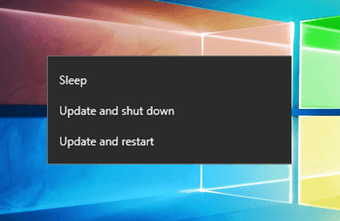Without a Wi-Fi network, your Windows PC or laptop is good for streaming offline videos and copying/moving local files. You need an active internet connection to install apps and software on your PC. Here are the best ways to fix Wi-Fi not prompting for password on Windows 11.
1. Restart Router
Rebooting your router is one of the easiest ways to fix Wi-Fi, not asking for a password on Windows. You can turn off the router, remove the power adapter, and plug it back in. It fixes usual network glitches. You may want to connect a Wi-Fi network, and the computer will ask for a password.
2. Update Router Firmware
If the router firmware is outdated, Wi-Fi may not ask for a password. You’ll need to update the router firmware and check again. If Wi-Fi fails to connect and doesn’t ask for a password, continue reading.
3. Disable Anti-Virus and Firewall
An active anti-virus and firewall can prevent your computer from asking Wi-Fi password. You can turn off a third-party anti-virus software on your PC and check again. You’ll need to disable an active firewall temporarily. Here’s what you need to do. Step 1: Press the Windows key to Start menu, search for Windows Security and Hit Enter. Step 2: Select ‘Firewall & network protection’ from the sidebar. Click Private network. Step 3: Disable Microsoft Defender Firewall from the following menu.
4. Forget Network and Try Again
Did you change your Wi-Fi network’s password? Usually, the Wi-Fi network should ask for a new password on your PC. You can forget the network and check if it asks for a new password or not. Step 1: Press the Windows + I keyboard shortcut to open Settings. Step 2: Select Network & internet from the sidebar and open Wi-Fi. Step 3: Select Manage Wi-Fi networks. Step 4: Forget the saved Wi-Fi networks and scan for them again. After you spot a familiar Wi-Fi network, click on it and enter a password.
5. Delete WLAN Profile
You can delete the WLAN profile and try accessing the Wi-Fi network. Step 1: Press the Windows key to Start menu, search for Command Prompt and select Run as administrator. Step 2: Type the following commands: netsh wlan show profile netsh wlan profile Change Profile with your Wi-Fi network’s name.
6. Change Network Security Key
You can use the Control Panel and change the Wi-Fi network’s security key. Step 1: Press the Windows key to Start menu, search for Network and Sharing Center and hit Enter. Step 2: Click ‘Change adapter settings.’ Step 3: Right-click on the Wi-Fi network and select Status. Step 4: Click Wireless Properties and move to the security tab. Step 5: You can change the password and hit OK. You can also change your Wi-Fi password from your local ISP’s app. The steps to change the security key vary based on your ISP.
7. Run Network Troubleshooter
You can use the network troubleshooter and fix the Wi-Fi not asking for password issue. Step 1: Press the Windows + I keyboard shortcut to open the Settings app. Click on System in the left sidebar and click Troubleshoot from the right pane. Step 2: Open Other troubleshooters and click run next to the Network Adapter. Follow the on-screen instructions and check if Wi-Fi asks for password or not.
8. Replug Wi-Fi Adapter
Issues with your Wi-Fi adapter can result in Wi-Fi not prompting for a password. You can remove the Wi-Fi adapter from the USB port and plug it again. If the Wi-Fi adapter isn’t working, get a new one. You can check our top Wi-Fi adapters list to pick one.
9. Use Ethernet Connection
Does your PC have an Ethernet port? You should ditch the wireless network and establish an Ethernet network on your PC. Ethernet connection offers high-speed and robust internet connectivity on a PC.
10. Update Windows
After you establish an Ethernet network on Windows, update the computer to the latest version. An outdated Windows build can result in issues like ‘Wi-Fi not asking for password.’ Step 1: Press the Windows + I keyboard shortcut to open the Settings app. Step 2: Select Windows Update from the left sidebar and click on ‘Check for updates’ button to fetch and install the latest Windows build on your computer.
Connect Wi-Fi on Windows
Wi-Fi not prompting for password disrupt your workflow. PC users can utilize the Ethernet port, and Windows laptop users need to try the steps above to fix the problem. The above article may contain affiliate links which help support Guiding Tech. However, it does not affect our editorial integrity. The content remains unbiased and authentic.

























